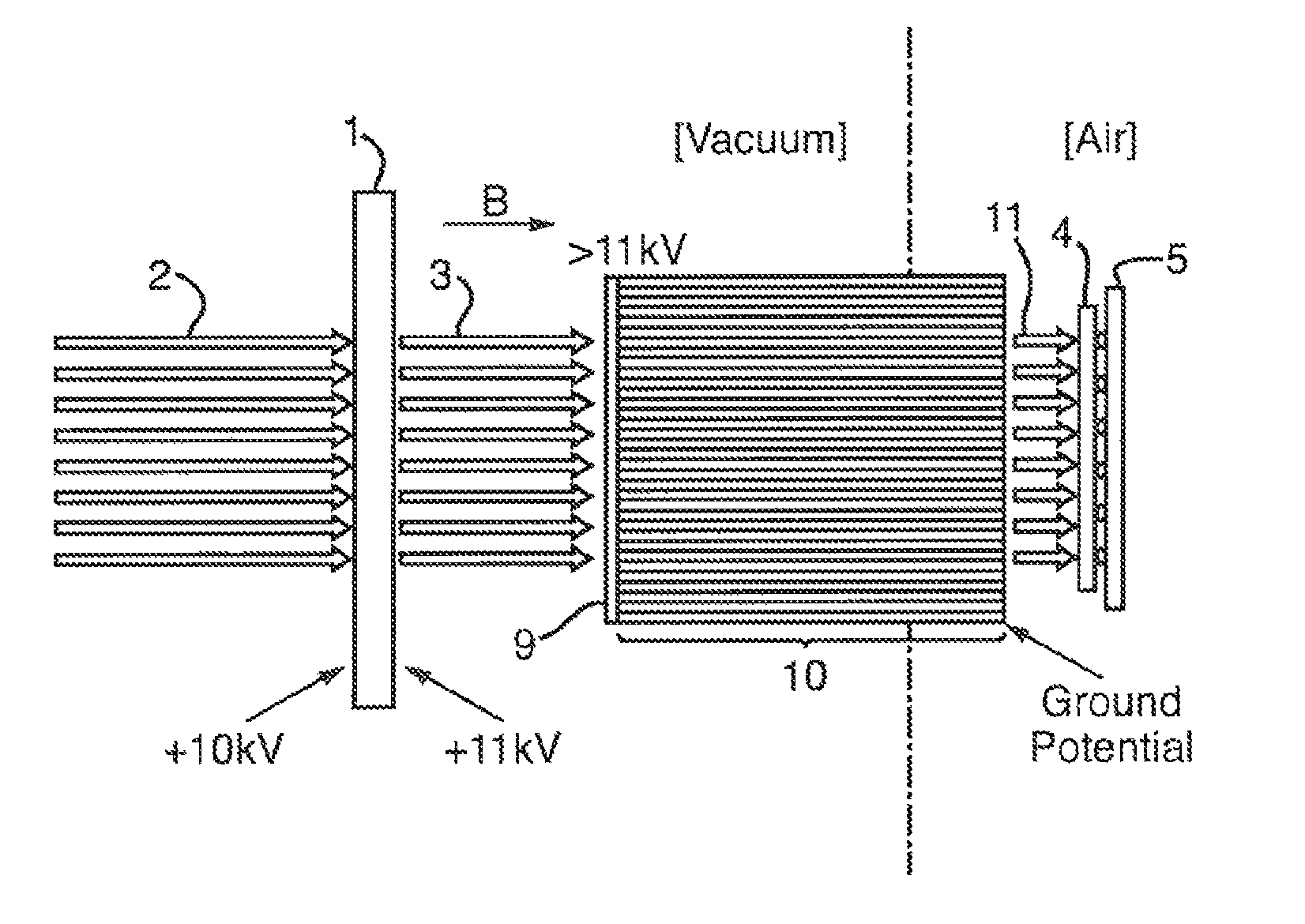Multiple channel detection for time of flight mass spectrometer
a mass spectrometer and multi-channel technology, applied in mass spectrometers, isotope separation, particle separator tubes, etc., can solve the problem of inability to distinguish between signals, inability to accurately represent signal intensity, and inability to record ion arrival events or actual number of ions, etc. problem, to achieve the effect of improving the dynamic range and abundance sensitivity characteristi
- Summary
- Abstract
- Description
- Claims
- Application Information
AI Technical Summary
Benefits of technology
Problems solved by technology
Method used
Image
Examples
Embodiment Construction
[0081]A known ion detector comprises a chevron arrangement of two Micro Channel Plates (“MCPs”) and a metallic anode detector. The two MCPs provide coulombic gains of 106 or more before digitization. Such an arrangement is effective in amplifying signals in an ion detector of a Time of Flight mass spectrometer up to an incoming ion rate of about 107 events / second. However, if the incoming ion rate increases above about 107 events / second then the double MCP arrangement becomes non linear as it is no longer possible to sustain the strip current required to maintain its gain.
[0082]FIG. 2 shows an ion detector according to a preferred embodiment of the present invention. The ion detector preferably comprises a single MCP detector 1. Ions 2 impinge upon the front face of the single MCP detector 1 which results in a cascade of electrons 3 being emitted from the rear face of the MCP detector 1. The electrons 3 are directed onto an array of silicon photodiodes 4. Each photodiode 4 in the ph...
PUM
 Login to View More
Login to View More Abstract
Description
Claims
Application Information
 Login to View More
Login to View More - R&D
- Intellectual Property
- Life Sciences
- Materials
- Tech Scout
- Unparalleled Data Quality
- Higher Quality Content
- 60% Fewer Hallucinations
Browse by: Latest US Patents, China's latest patents, Technical Efficacy Thesaurus, Application Domain, Technology Topic, Popular Technical Reports.
© 2025 PatSnap. All rights reserved.Legal|Privacy policy|Modern Slavery Act Transparency Statement|Sitemap|About US| Contact US: help@patsnap.com



